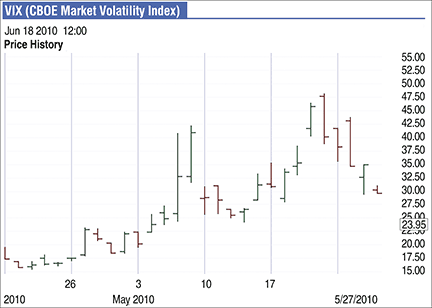INDICATORS
Profit With The Volatility Index
Vix And The Lemming Effect
Investors are prone to buy when they should sell and to sell when they should buy. How can we prevent ourselves from making these mistakes?
Lemmings, small rodents best known for an instinct to charge off jagged cliffs to their deaths en masse, have immortalized the term “lemming effect.” A lemming effect signifies an event where the collective actions compel the herd to stay within the group, only to meet with tragic results in the end.
This is also an effective metaphor for the stock market, where millions of investors will follow the crowd at both ends of the extreme: up or down, bullish or bearish, with tragic results as they overplay their position. While otherwise intelligent, these people can’t seem to help themselves when the trends sputter to an end yet they continue in that direction, and then compound the problem by failing to confront the fact that their ride is over.
Where you might see tragedy for millions of investors who give in to this compulsion, there also lies the opportunity for a skilled investor to profit as well. When markets reach these points, the savvy speculator has the opportunity to ride out the uptrends with caution as the market takes share prices to overvalued heights before selling out at a windfall profit. By the same token, when share prices fall to extremely undervalued levels during a downtrend, once again, skilled investors like Warren Buffett step in to buy stocks at below wholesale prices.
So if investors are prone to buy when they should sell and to sell when they should buy, how do you tell when that is likely to happen?
The VIX
“Vix” stands for the “Chicago Board Options Exchange Volatility Index” and is a measure of the level of implied volatility of a range of options based on the Standard & Poor’s 500 (Figure 1). This indicator is known as the “investor fear barometer” because it reflects the investor’s best prediction of short-term market volatility, or risk. The Vix starts to rise during times of financial anxiety and falls as investors become complacent, which makes it the market’s best prediction of short-term market volatility.

Figure 1: investor fear barometer. The Chicago Board Options Exchange Volatility Index (VIX) is a measure of the level of implied volatility of a range of options based on the S&P.